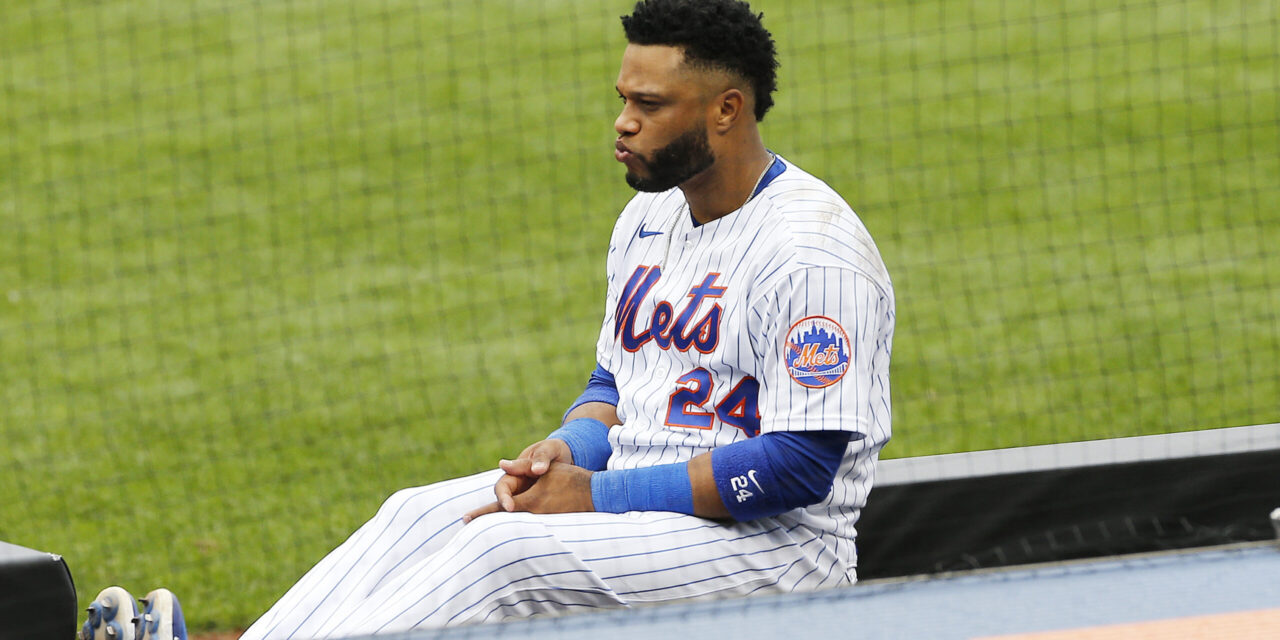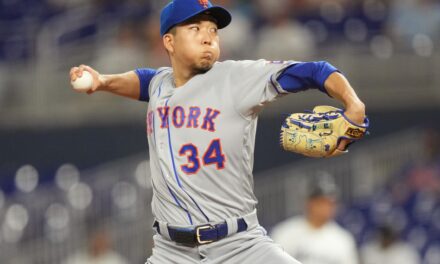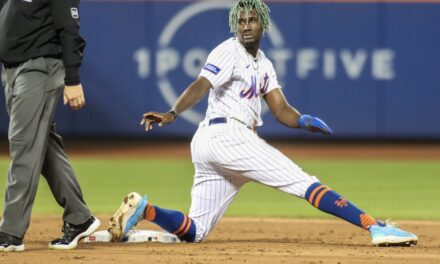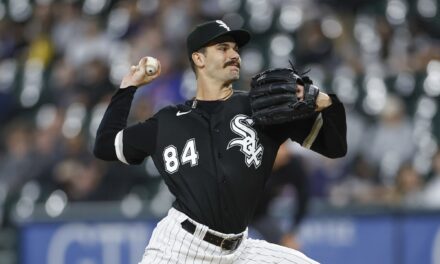
Credit: Brett Davis-USA TODAY Sports
The Cano Trade Kicks Off The Lid Of The Coffin
By Greg Jones
Nothing evokes a third rail response in the Mets blogosphere more than a comment that perhaps the Cano trade is aging better than its initial reviews as the worst trade in Mets history, apologies to Jim Fregosi. But, lets review the nuts and bolts of this mega-deal.
Mets-Mariners Trade, December 3, 2018
New York Mets get:
Robinson Cano: A 36-year-old second baseman with Hall of Fame career numbers, but coming off a half season suspension for a diuretic often used to mask performance-enhancing drugs such as steroids. Cano protested mightily, saying it was prescribed by his doctor and – whatever, overtaken by subsequent events. Big liar.
Edwin Diaz: A 24-year-old closer with three years of control left, coming off an All Star season in which he led the league in saves.
Seattle Mariners get:
Jay Bruce: A 31-year-old corner OF with good thump, coming off the worst season of his career of his career in 2018 (-0.9 bWAR).
Anthony Swarzak: A 32-year-old middle reliever coming off the worst season of his career (6.15 ERA, -0.4 bWAR)
Gerson Bautista: Number 15 ranked prospect on the Mets, 22-year-old fireballer reliever out of the DR who split time between low A and high A in 2017, pitching to a 4.21 ERA.
Justin Dunn: Number 5 ranked prospect on the Mets, a 22-year-old former first round pick coming off a disappointing 2017 in High A, pitching to a 5.00 ERA.
Jarred Kelenic: The number one Mets prospect, and number one in some national lists, an 18-year-old, five tool center fielder. The future so bright, he had to wear shades.
This deal was under the Wilpons, so, naturally, follow the money.
Payroll-wise, Diaz, Bautista, Dunn and Kelenic were small potatoes with free agency far in the future. So set them aside.
The headline here, of course, was Robinson Cano’s contract, stretching out 5 more years at $24 million per, $120 million through his Age 40. Yikes. This was offset somewhat by $20 million in cash he carried back with him courtesy of the Mariners. But Mets were on the hook for $100 million.
Anthony Swarzak was owed $8.5 million in 2019Jay Bruce was owed $14 million in 2019 and $14 million in 2020.
So unloading those two, and calculating Cano and the cash, was another $36.5 million to the Mets in total commitments. However, it was actually a savings for their 2019 payroll, $3.5 million less (the Cano money was skewed frontload to $5 million in 2019). In 2020, the second year of Bruce’s contract and the first year of Cano’s at $20.25 mil meant an added hit to 2020 of only $6.25 mil. After that, of course, the hit was Cano’s full contract, $20.25 mil per year through 2021-2023.
So, basically, the money was much closer in the long run than the headline of the deal to the average fan “Mets Take On Aging Cano’s $120 Million Contract!”
Now, one year in, end of 2019. This is where the deal really cemented itself with fans as an epic Mets disaster.
Cano, who still looked pretty lively in the second half of 2018 with the Mariners with a .303/.374/.471/.845 slash after his first half suspension, looked his age in 2019 with the Mets, struggling through injuries to slash .256/.307/.428/.736 in 107 games.
Edwin Diaz struggled as well, with seven losses and seven blown saves pitching to a wincey 5.59 ERA with 26 saves.
Meanwhile in Seattle, Swarzak and Bruce had been traded off, Kelenic was going through the minors like Sherman through Georgia, and Dunn had a solid year in the minors and looked good in a cup of coffee with the big club in September.
The Cano trade’s tragic epitaph was chiseled into its gravestone at the close of 2019, no more discussions, please.
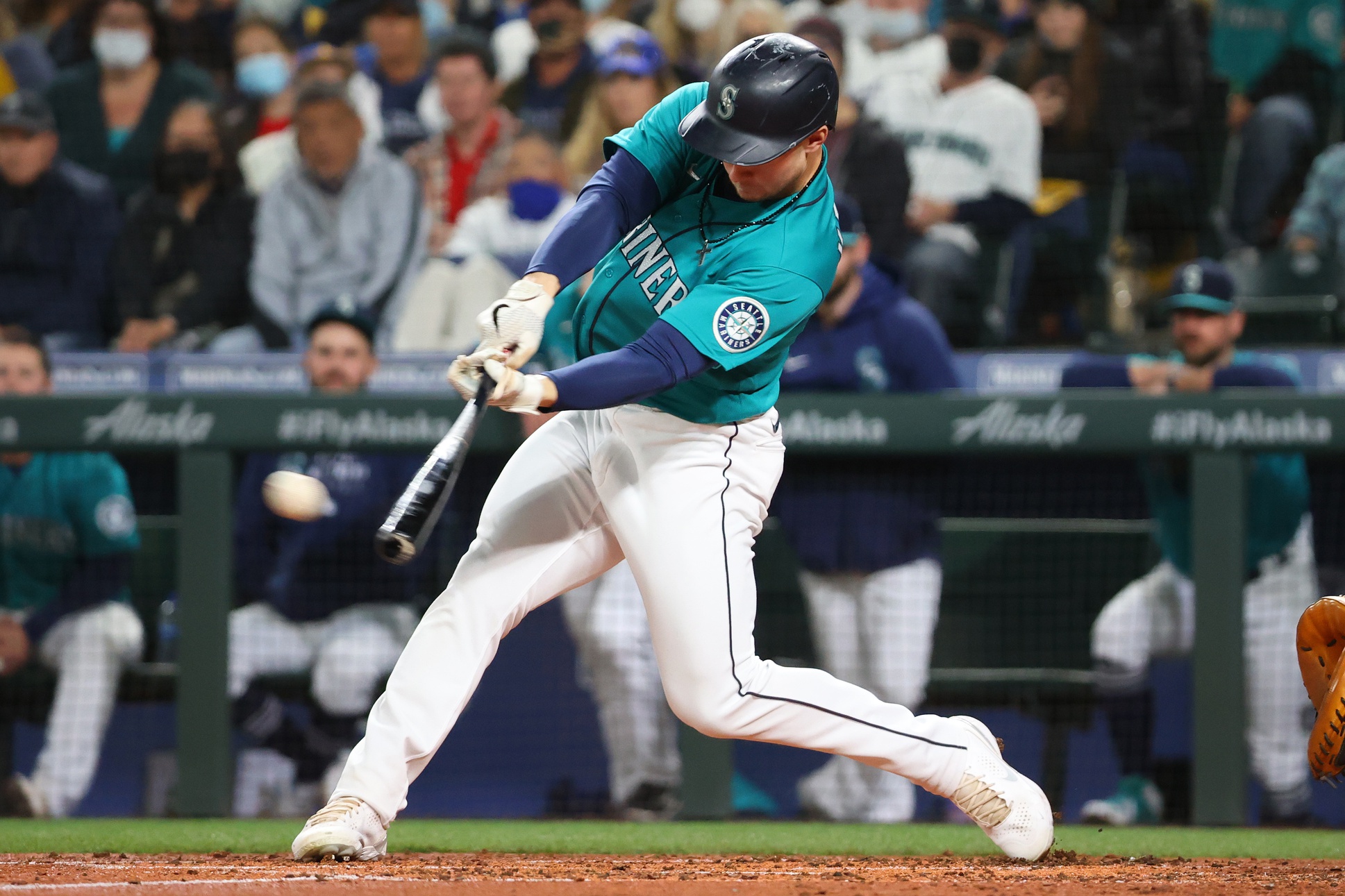
Photo by Abbie Parr, USA TODAY Sports
A Look Today
But, what the heck, let’s look at how events have continued to the winter of 2022.
Robinson Cano had a renaissance in 2020, once play got under way in July. He slashed .316/.352/.544/.896 in 49 games, and was even lurking in the scrum for the batting title into September. After the season there was a piece of good…..well, there was an event, as a second PED test failure led to Cano’s suspension for all of 2021 (Mets + $20.25 million). So, to date with the Mets, in a season-like sample of 156 games, Cano has slashed .275/.321/.463/.784 with 23 home runs, totalling a 1.7 WAR.
The other piece of the deal, Edwin Diaz, had a bounce back year in 2020 with a 1.75 ERA in 26 games. In 2021, he notched 32 saves, and in his Mets career so far he is +2.0 WAR. While there is nothing in baseball harder than a closer recovering his reputation, the reality is that Diaz has rounded into a better than average closer. Since 2019 he is 4th in saves in the NL, and in the last two years he has more strikeouts than any NL closer.
Since coming into the majors in 2016, Diaz’s 173 saves trail only Kenley Jansen, and Diaz is five years younger than anyone else in the top five. He is not Mariano, but he is better than most team’s closers, and in a role dominated by veterans, Diaz is only 27.
Let’s look at the “winner” of that deal, Seattle.
Swarzak and Bruce and their $36.5 million were traded off as salary dumps. Both are out of baseball.
Gerson Bautista, after surrendering 11 runs in 9 innings with the Mariners in 2019, was let go, and is currently in the wind.
Justin Dunn, after looking like a pretty solid 4-5 candidate in 2020 with a 4.34 ERA in 10 starts, dropped to a 1-3 record in 2021 before going down in June with shoulder inflammation. Two comebacks were aborted with the same pain. Rehabbing this winter, Dunn will compete for the number 5/swingman spot in the spring.
Now the moneyshot of the deal, as it was the day it was announced, and this deserves a deep drill. Jarred Kelenic’s darkest angels could not have conjured up a worse start in Seattle. Offered a long term multi-million dollar extension in 2019, Kelenic turned it down. When he stayed down in the minors in 2020, and the Seattle president blurted out that he wouldn’t be starting in Seattle to begin 2021, Kelenic exploded, accusing the Seattle brass of extorting his service time to force him to sign a deal.
After a national media kerfluffle, the Seattle CEO Kevin Mather resigned, despite heatedly denying there was any quid pro quo. Well regarded Seattle GM Jerry DiPoto also agreed, saying they believed Kelenic needed more development time.
Kelenic, eyeing the 2020 team, had his own comments:
“…..here you have a team that is one game out of the playoffs going into the last weeks of the season. I know for a fact I could have helped that team out…..(they should) have the best guys on the field, especially when you talk about a team that hasn’t gone to the playoffs in 20 years, and your best prospects are just sitting there watching.’’
DiPoto addressed the team after Mather’s resignation in the first spring training workout, making soothing sounds and attempting to put the issue aside as the team headed into what they expected to be a 2021 season as a contender.
The Mariners were alarmed that Kelenic showed up clocking in 30 lbs. heavier, and looking maybe not so much like a speedy centerfielder anymore. After a knee injury in spring training, possibly totally unrelated to carrying around 30 lbs more, but also possibly related, Kelenic did not make the Opening Day roster. This created another national media explosion of service time manipulation accusations, although cooler heads pointed out that the 21-year-old Kelenic had only played 21 games above Class A ball and had barely 800 professional at-bats.
Finally, FINALLY, called up in May, Kelenic started every game for three weeks. He tallied 8 hits in 92 plate appearances for a .096 batting average, striking out 26 times and looking utterly overmatched by major league breaking stuff. His service time complaints jumping back down his throat, he was sent down to AAA, where he again pounded on all that non-filthy breaking stuff. Brought back in July, he showed some flashes of power, and had a good September (perhaps against AAA callups?) Anyway, he still wound up his debut season with a batting average of .181.
To put that in perspective, that is the lowest batting average for an AL rookie with at least 375 plate appearances since….ever. Records go back to 1871. Second on the list is John Gochnaur, who batted .185 in 1902, and backed that up with a .185 in 1903, then disappeared into the mist of history.
While Kelenic’s -1.8 WAR had similar historic aspects, it was dominated by his defensive mark of – 1.6 dWAR. Perhaps because of the knee injury or the weight, Kelenic did not acquit himself well in center field. In fact, Kelenic may have a very difficult time winning a starting job this spring.
Center fielder Julio Rodriquez, the number one prospect in baseball, may be ready to take center for the next decade or so. At the corners, you have veteran Mitch Haniger, coming off a 39 HR, 100 RBI season in 2021. And in the other corner you have 2020 Rookie of the Year Kyle Lewis, back after missing most of 2021 with a knee injury.
It may well be that, rather than having Kelenic in a fourth outfielder bench role, he could be back in AAA for some or all of 2022.
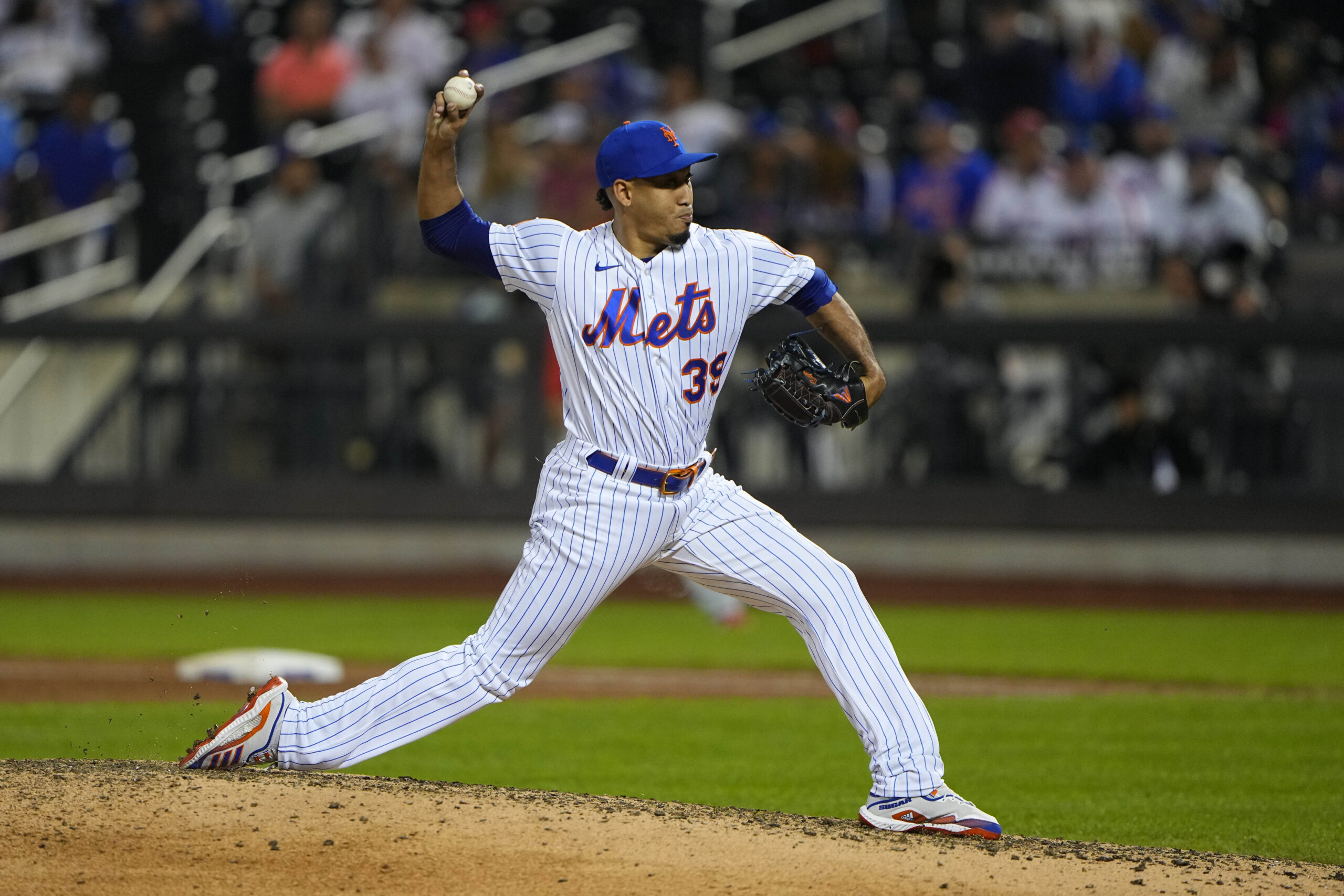
Gregory Fisher-USA TODAY Sports
Back To The Trade
The metrics here are so small as to approach rounding errors, but the total bWAR for the players run to +3.7 for the Mets, -0.1 for the Mariners. In terms of the 2022 season, the 4th after the trade, Swarzak and Bautista are free agents/out of baseball, as are the three players acquired when the Mariners dumped off Swarzak and Bruce.
Bruce, after 10 games in April ’21 with the Yankees, voluntarily retired and is out of baseball.
So for the Mariners, the on field residuals of the trade are Dunn and Kelenic. Cano and Diaz remain with the Mets, penciled in for major roles as DH and closer.
(One quick takeaway about valuing prospects. Being the 15th or 20th ranked prospect on the 29th ranked farm system isn’t as shiny as you might think.)
Now, in assessing the “what-ifs” of this trade, there is another factor. The Mets were all in for 2019, and in December 2018, they needed a closer. AL saves leader Diaz was being dangled to the league, and the Mets knew he had suitors in the NL East. Unless they acquired him it was quite possible they would be facing Diaz throughout 2019.
In the free agent market, there was only one top closer available in December 2018 – Craig Kimbrel, and the speculation was rampant about the Mets inking the veteran closer. Kimbrel eventually signed a 3/$43 mil with the Cubs, about $30 million more than the comparable payroll would have been for Edwin Diaz. And Kimbrel was lousy/horrible with the Cubs, going 0-5 with 15 saves, a 6.00 ERA, and a -0.6 WAR in 2019 and 2020. Yes, for 2019 and 2020, Kimbrel was even worse than Edwin, who was 4-8 with 32 saves, a 4.41 ERA and a 1.0 WAR over those two years and for about $20 million less.
So if the trade never happened, and they went for Kimbrel, the Mets would have had Swarzak, Bruce and Kimbrel on the payroll for 2019….about +$35.5 million versus the -$3.5 million after the deal.
So, given all that….well, the next few years of Cano and the career of Edwin Diaz are a factor. But no matter what, this trade will wind up being measured by the career of Jarred Kelenic.
The financial drivers on the Mets side have disappeared as completely as one could imagine with the magical appearance of Steve Cohen and his billions. If Kelenic does turn it around and lives up to his Mickey Mantle comparisons, it was the worst trade ever. But if he winds up a run-of-the-mill Jay Brucey power bat in a corner OF position…maybe not so bad a deal. Not so bad at all…
* * * * * * * *
This Fan Shot was contributed by MMO community member Greg Jones. Have something you want to say? Share your opinions with the best and most diverse Mets community on the web! Send your Fan Shot to [email protected].


